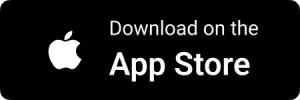Popular streaming platforms like Netflix and YouTube battle for users’ attention. These shape how they spend their free time, what they choose to watch, and even how they feel. With generative AI, such platforms have gained an even wider audience.
During Netflix’s recent 2024 Q3 earnings call, co-CEO Ted Sarandos was questioned on the growing consumption of YouTube content and its impact on Netflix. According to him, Netflix competes directly with YouTube in terms of the time viewers spend on TV screens. Regardless, he believes that both companies have very different advantages.
Where exactly does Netflix stand to have an advantage? Sarandos wasn’t hesitant to say that it is its streaming capabilities.
“What consumers want, we give it to them. We give them choice and control. We have that enormous reach that we talked about. We continue to lead the industry in engagement,” he said.
Netflix vs. YouTube
Netflix largely collaborates with production houses and focuses on enhancing the quality of its shows and movies in unprecedented ways. Notably, the streaming giant is connecting with top YouTubers and digital creators through strategic partnerships and content creation deals to collaborate and create exclusive content for its platform.
In contrast, YouTube predominantly features content produced by individual content creators, vloggers, or artists, and it often cannot match the same level of production quality.
While both platforms use AI, the user experience and content discovery mechanisms differ significantly. Netflix has a highly personalised recommendation system, but it tends to push Netflix originals or licensed content, thereby limiting exposure to less popular titles.
Unlike Netflix, YouTube promotes a wider variety of content from numerous creators. Its algorithm focuses on user behaviour such as likes, comments and subscriptions and serves content that is not only relevant but also engaging based on how users interact with videos.

While elaborating on how the two platforms complement each other, Sarandos said Netflix posts trailers on YouTube, which attracts many viewers and promotes YouTube.
Simultaneously, creators can promote Netflix content through trailers or reviews on YouTube, which helps Netflix reach wider audiences.
Netflix has emerged as a go-to platform for binge-worthy content, especially series and movies. YouTube, on the other hand, has positioned itself as a space for shorter, user-generated videos catering to diverse audiences.
Beyond just entertainment, YouTube extensively offers educational content, DIY tutorials, gaming streams, product reviews and vlogs. YouTube has become a hub for learning and community engagement.
Netflix’s subscription model generates higher returns for creators, which allows them to make more ambitious investments in their next projects.
YouTube is an open platform where any creator can start uploading content. Even though this strategy works well for achieving diverse content from diverse audiences, it doesn’t sit well with viewers who want trustworthy premium content.
Digital creators can access big audiences on both platforms. The benefits, however, are different, especially when it comes to how ads are implemented.
While YouTube implements advertisements as breaks within its videos, Netflix strategically places ads during natural plot breaks for a more seamless experience. Some newly released movies display ads only before they begin, while some have ads before the movie or show is selected.
Sarandos thinks Netflix brings great value to shareholders as well, owing to higher revenue and profit. Spencer Adam Neumann, Netflix’s chief financial officer, said they expect to deliver roughly $43 billion to $44 billion of revenue next year. This is based on foreign exchange rates at the end of Q3 and is estimated to be an 11-13% growth ($4 billion to $5 billion of incremental revenue) as compared to 2024.
How does AI play a Part?
All through history, entertainment and technology have worked hand-in-hand. As we know, AI in video generation has already surpassed the production stage and is being used to create full movies.
This trend can be observed not just in the film industry but also on the various platforms that host and stream such movies. With a major development in the text-to-video generation space, streaming platforms, including Netflix, are also adapting themselves to this change.
Sarandos explained that for AI to be truly impactful, it must contribute to the quality of storytelling rather than simply reducing production costs.
YouTube is Implementing AI for Creators
During Alphabet’s 2024 Q3 earnings call, it was revealed that YouTube’s combined ad and subscription revenue for the past year has surpassed $50 billion, driven by services like YouTube TV, NFL Sunday Ticket, and YouTube Music Premium.
As reported by AIM in September, it was announced at Made On YouTube that Google DeepMind’s video generation model, Veo, is coming to YouTube Shorts next year to assist creators.
Philipp Schindler, Google’s senior vice president and chief business officer, stated, “Ads, YouTube, and partnerships are highlighting the impact AI is already having on our business.” YouTube’s AI tools, including Gemini, are enhancing video recommendations, making them more relevant to viewers and increasing creator exposure.
Alphabet CEO Anat Ashkenazi highlighted, “We continue to have significant growth in our subscription products, driven primarily by YouTube TV and YouTube Music Premium.”
Shorts continue to grow, as 70% of channels now upload them, and YouTube offers a new option to make three-minute videos. Monetisation for Shorts has improved, especially in major markets like the US.
YouTube has also expanded its reach on TV screens, resulting in a 30% increase in revenue for creators from this format over the past year. This clearly shows that YouTube is not much behind Netflix.
Contrasting Content Consumption
Meet Nilam Pathak—a 26-year-old backend developer from India. His days are structured and busy, often leaving him overwhelmed by the constant flow of information. To unwind, he turns to his go-to entertainment platform, Netflix.
Even though he tunes in to YouTube for a couple of hours during work for podcasts and music, it’s the weekend when Netflix truly shines. That is when Pathak spends between four to five hours binge-watching shows, each episode pulling him into the next. “It’s familiar, friendly, and packed with options that keep me clicking ‘next episode’ again and again. It’s not just a streaming service; it’s a routine,” he explained.
On the other hand, Saket Narayane, a 28-year-old product lead, sees YouTube as an essential part of his day. While Netflix gets the occasional half-hour visit, it is YouTube that truly commands his focus. Each day, Saket spends over three hours diving into a variety of content, from music and podcasts to tutorials on scientific concepts, TED Talks, cooking, and case studies.
Narayane revealed he relies on the video platform to upskill himself, find new tech insights, and prepare for projects. “It’s like a video format search engine,” he noted, emphasising that it helps him stay informed without feeling like he is wasting time.
These user habits reflect a bigger story about how content is consumed lately. Netflix gives us premium, polished, binge-worthy shows and movies that make us sit back and relax. YouTube, with its endless mix of vlogs, tutorials, and music, invites us to lean in, explore, and even contribute our own content.




































